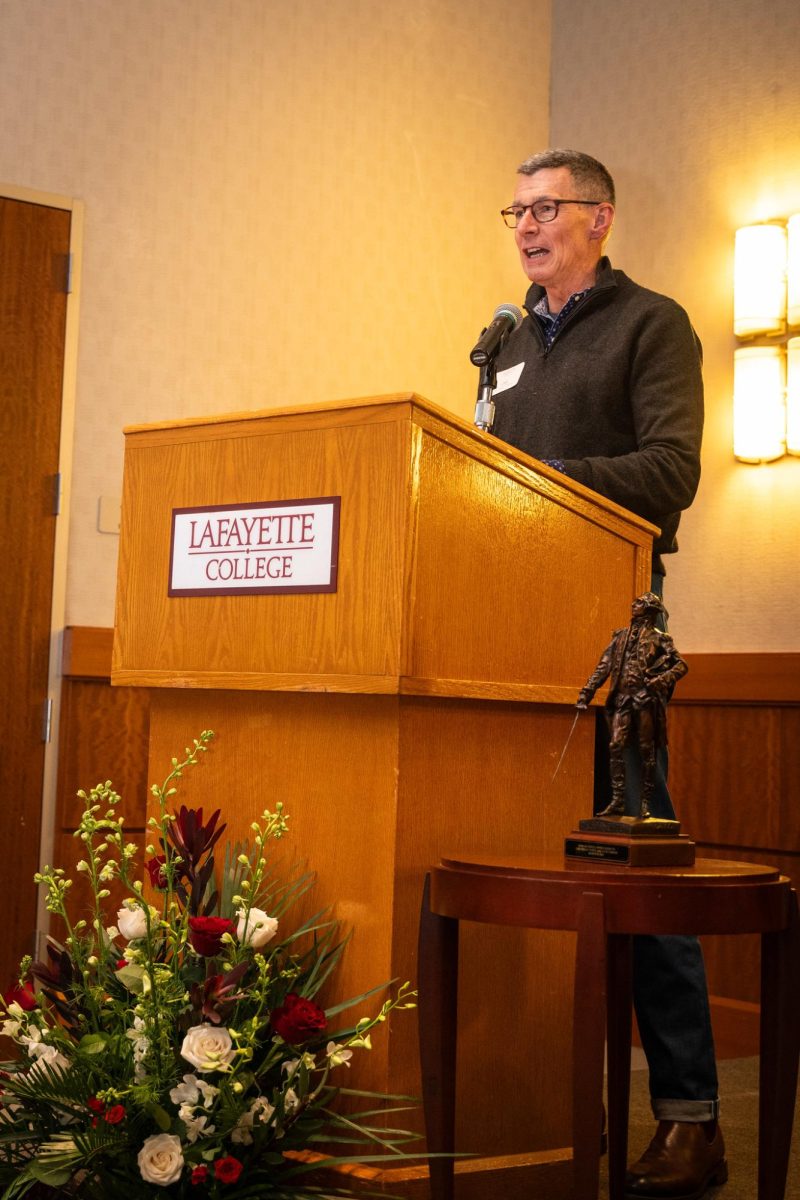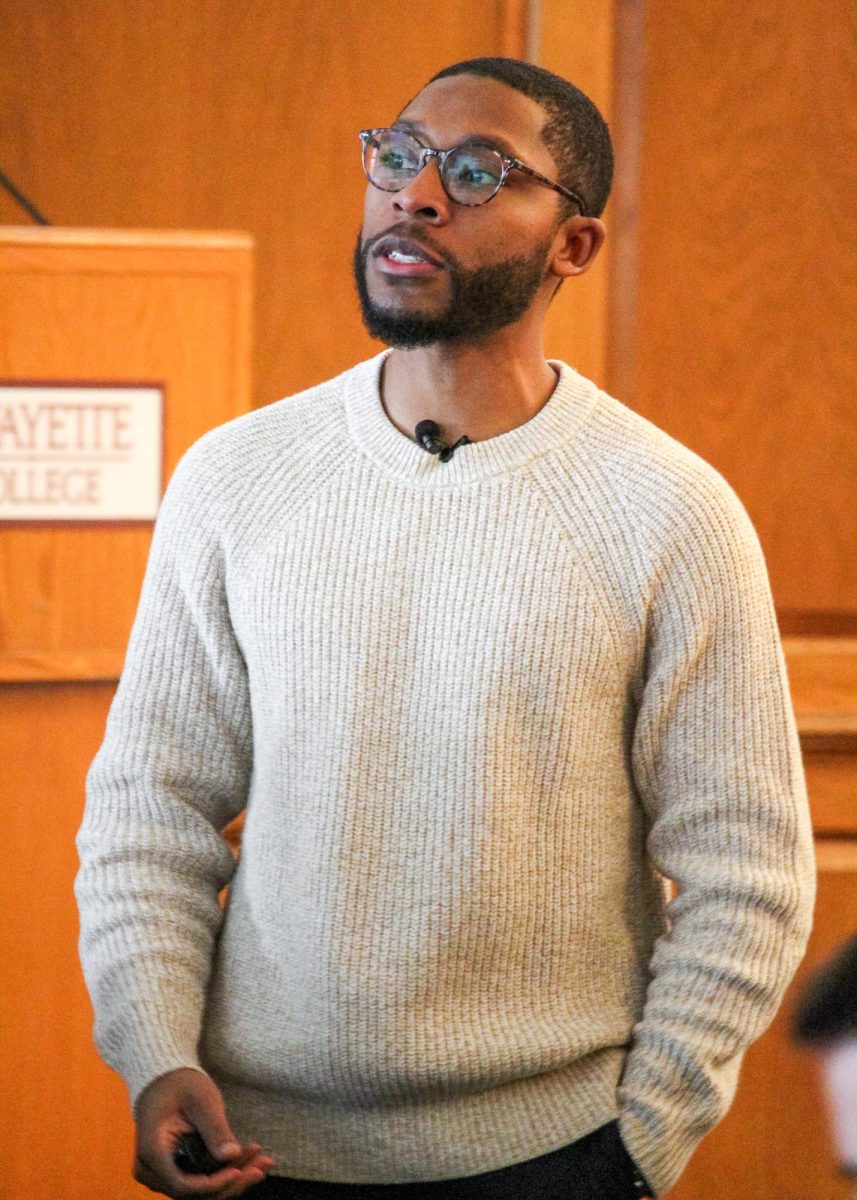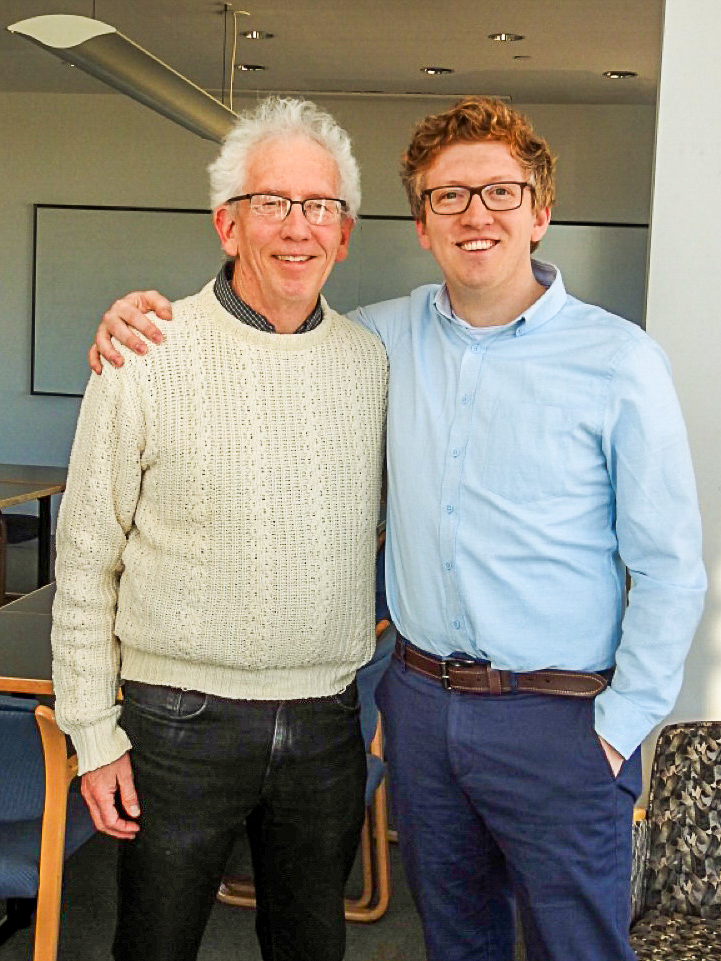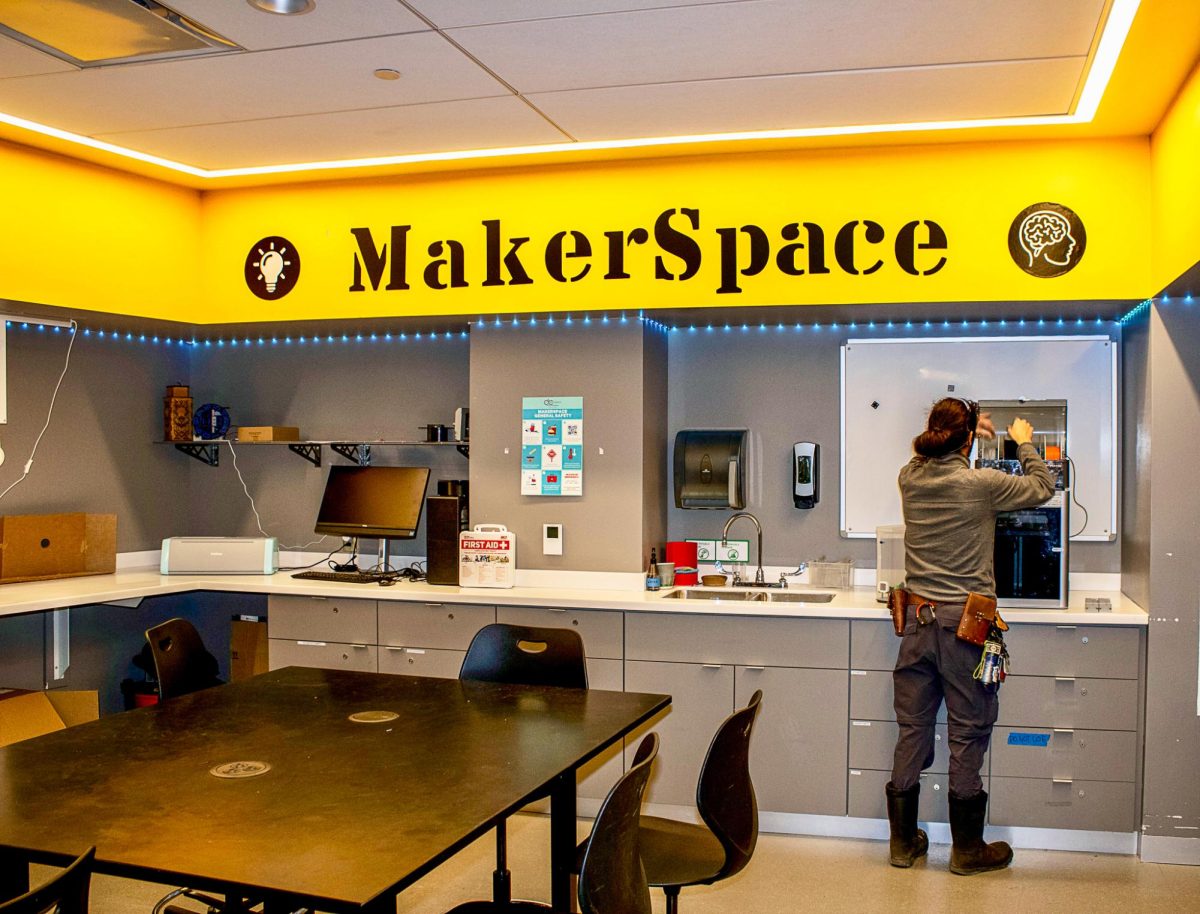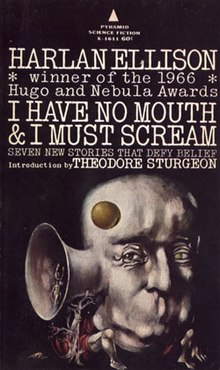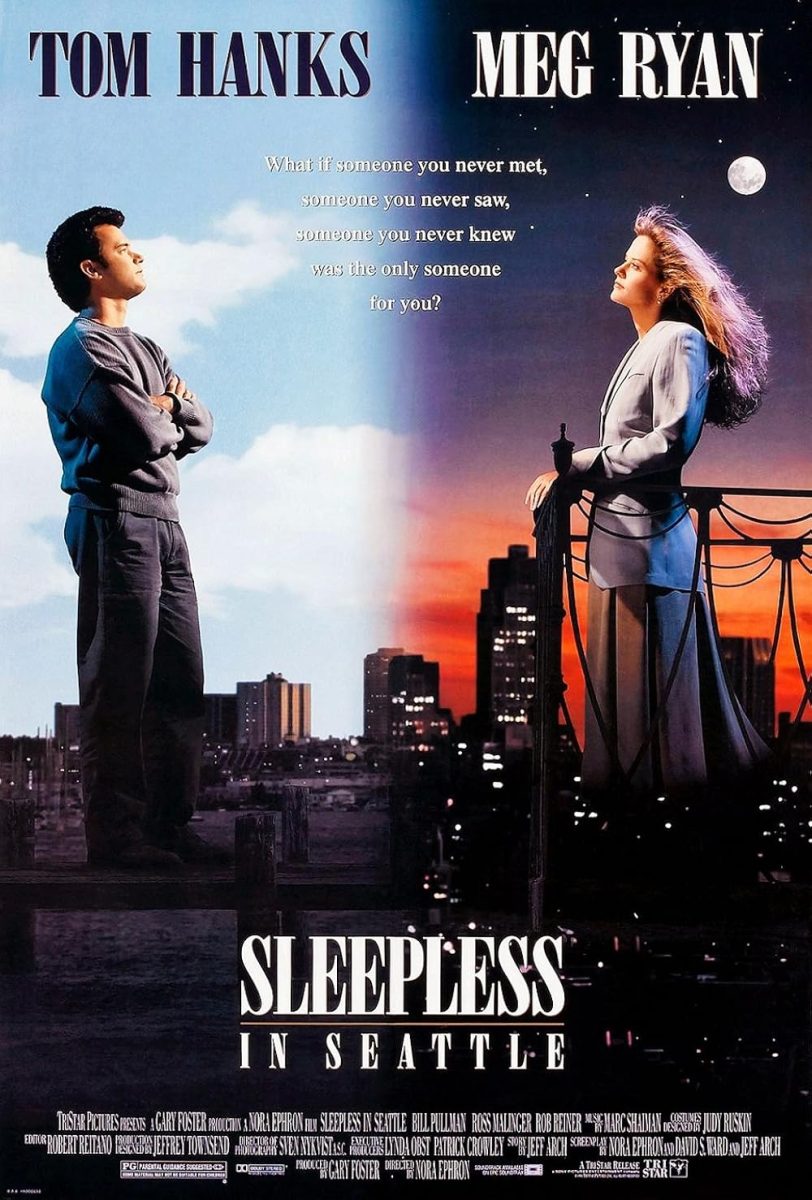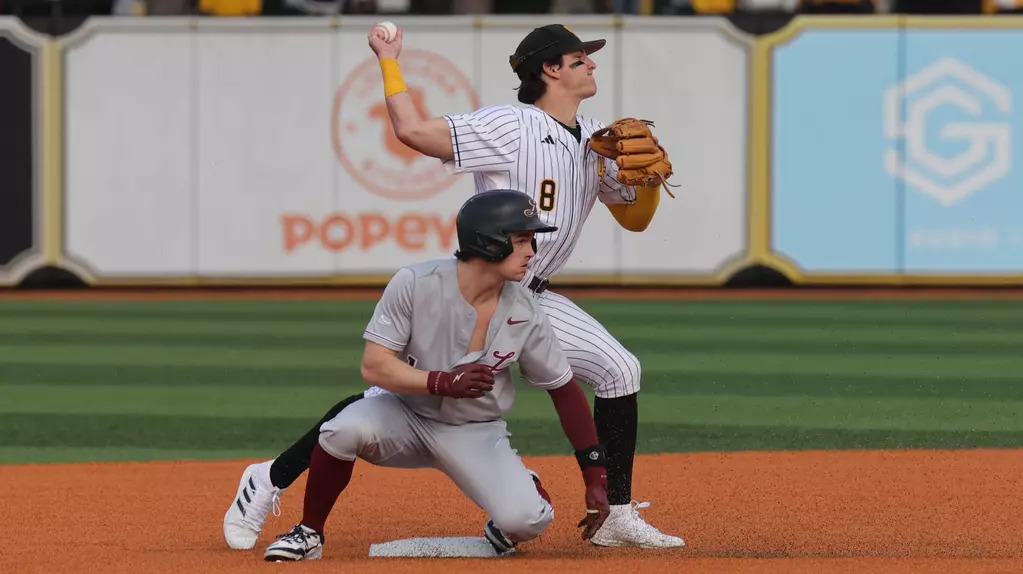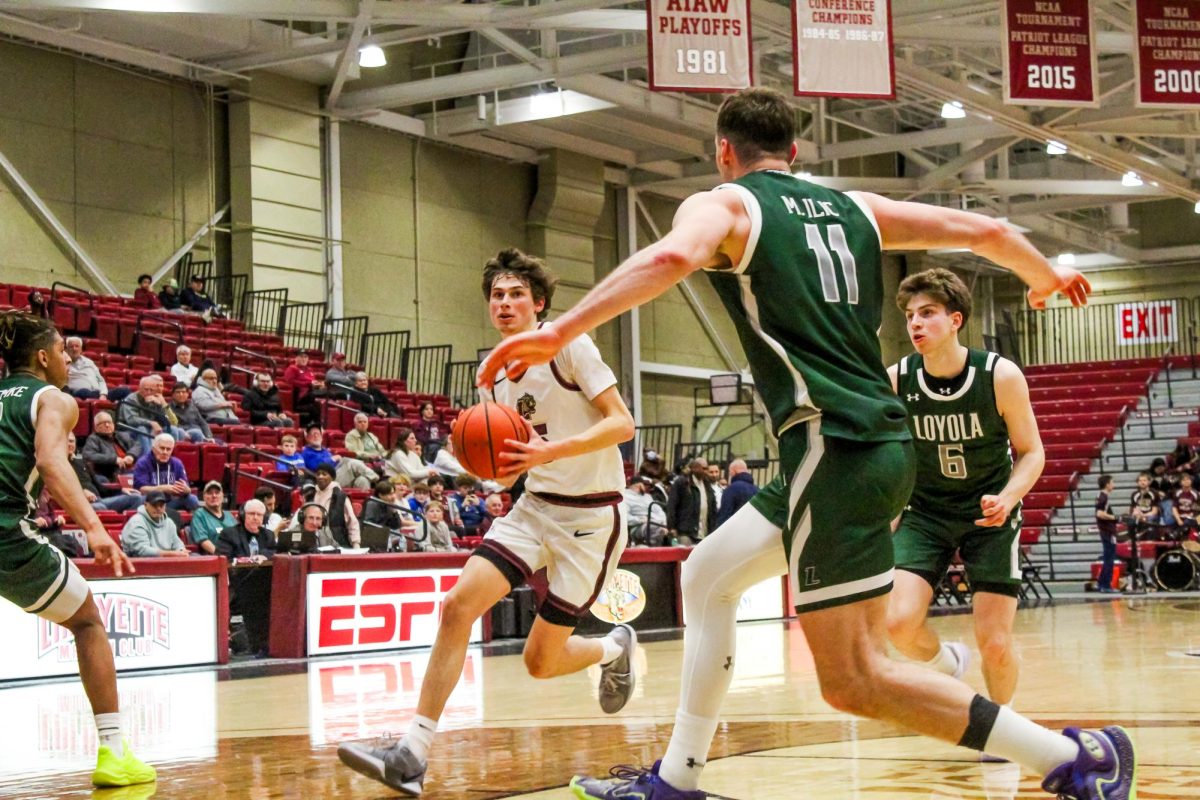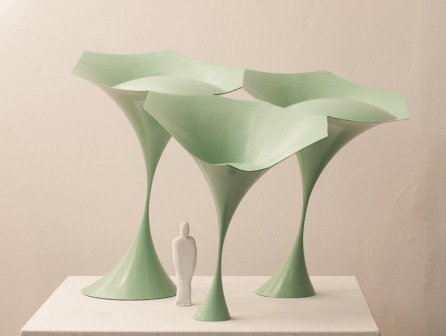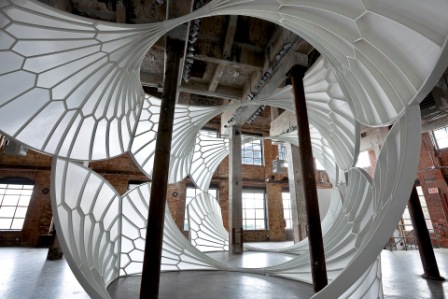Photos courtesy of davidhenderson.org
His artwork begins with a simple shape: the torus. In laymen’s terms, it is a structure that resembles a donut. David Henderson, an artist from Brooklyn, specializes in sculptures and is especially focused on re-creating the torus shape in his work, some of which are currently featured in the Grossman Gallery of the Williams Visual Arts Center.
“[The structures] embody calculus and topology, disciplines that study the interaction of complex curves. Yet math is neither the starting point nor the goal: it’s a hidden presence,” Henderson said.
This round, curvaceous figure is reconstructed in sculptures that look weightless and smooth, coming from and going into its original torus shape.
The Grossman Gallery also features other artists who also apply unique stylistic techniques. These artists prove that there is unlimited flexibility to recreate form, space, meaning, and time.
Painter Jacqueline Lima uses the concept of time to introduce a dimension that painters often neglect. As opposed to the traditional one-time setting of most paintings, Lima seeks to introduce time into her work by splitting her paintings into sections that reflect a continuing movement.
In one piece entitled High Tea, Lima paints a scene that depicts several women enjoying their afternoon tea in a cozy dining area. However, as the length of the painting is scanned across from left to right, one will realize that the painting is moving across a span of time.
“I tried to make my paintings seem more realistic, so I thought, ‘Why not add time to the picture?’” Lima said. “So, by utilizing vertical strips of the painting, I was able to create the illusion of time. Each strip has its own significance, and in its entirety, it paints a small story for the viewer.”
Thom Cooney Crawford connects his work to art and culture. Modeled from the Greek mythological figure Orpheus, his statues of microcrystalline material are hand molded, leaving a “personal impression” on each structure.
Orpheus is renowned for his beautiful voice, lyric poetry, and lyre playing. The story goes that Orpheus, failing to rescue is wife, Eurydice, causes her to die due to doubt. Charon, gatekeeper of Hades, refuses to let Orpheus reenter to save her.
Crawford’s sculptures of Orpheus are very rigid in structure. He explains the meaning behind his art.
“[The structures] symbolize the failings and how they have ensnared Orpheus into a state in which he is without his wife, Eurydice. In contrast to the Orpheus statues, the Eurydice statue is free-flowing and limber to represent the ephemeral state of her being and how earthly conditions cannot hold her back,” Crawford said.
The Grossman Gallery is hosting the exhibit until September 28. The gallery is open from 1:00 PM to 4:30 PM and is free to the public.





















